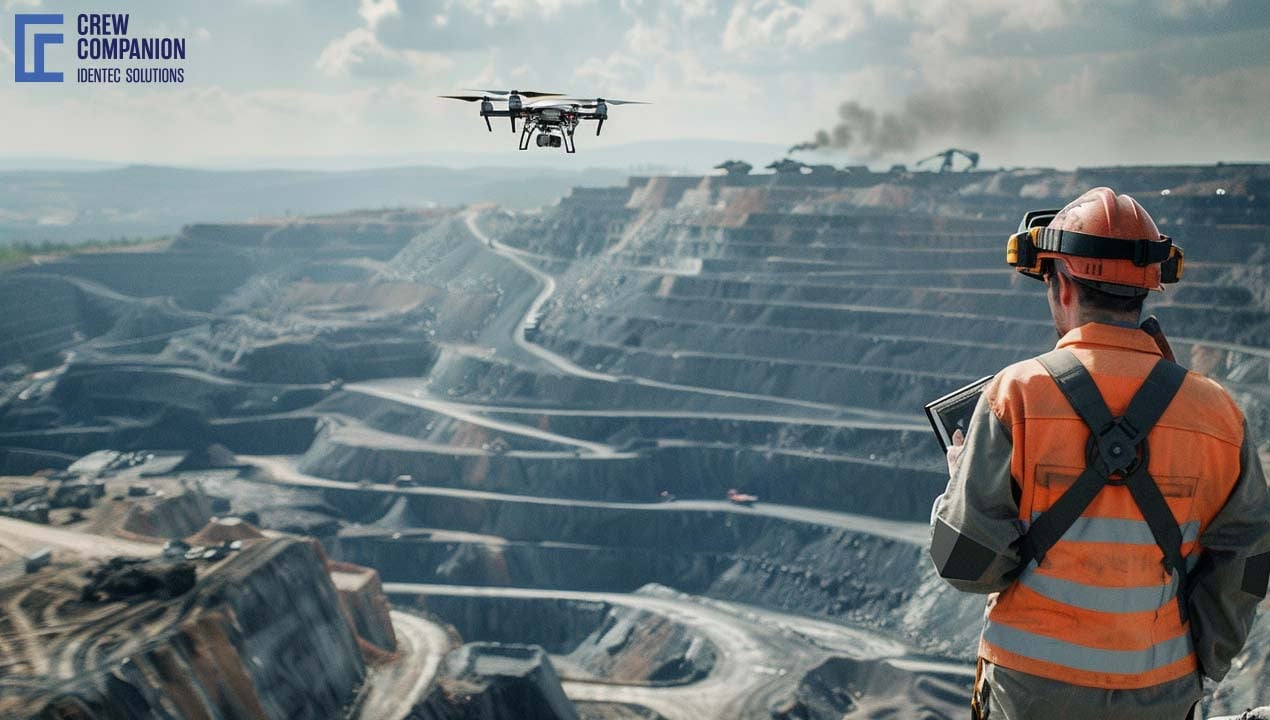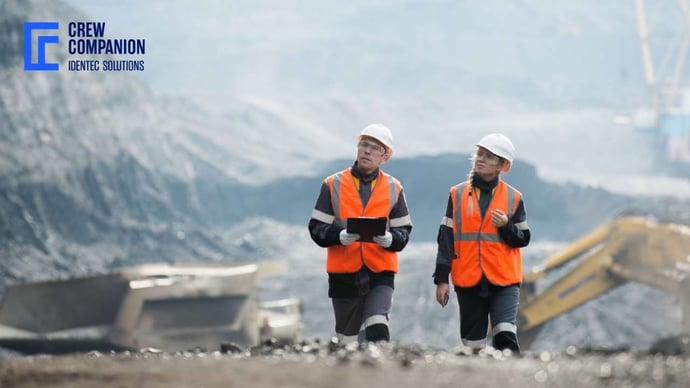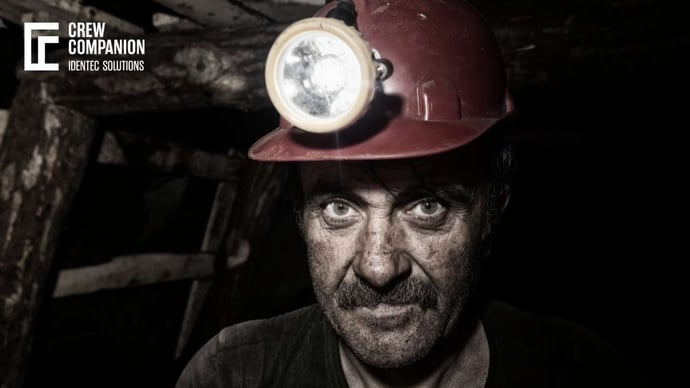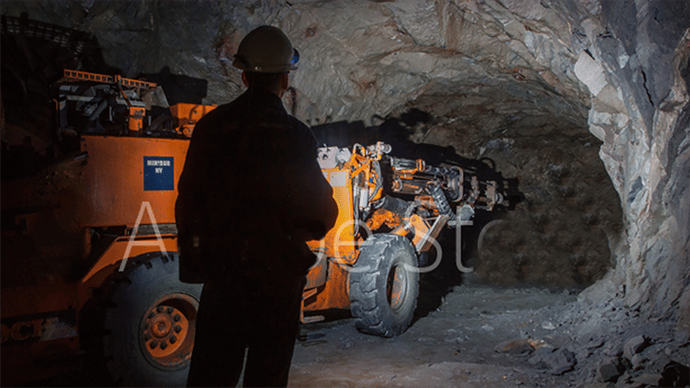Mine Monitoring: Methods to keep everyone safe
| Written by Michal Wozniakowski-Zehenter

No video selected
Select a video type in the sidebar.
Mine Monitoring Essentials
The term “mine monitoring” implies a wide range of activities aimed at making the mine safe, ensuring the working efficiency of the environment, and maximizing productivity. In its simplest form, it refers to the continuous observation and measurement of environmental parameters, structural conditions, and “equipment health”. The most critical environmental parameters are air quality, temperature, and humidity, as well as the concentration levels of various hazardous gases that pose a threat to the miners’ health. Concerning structural monitoring, the critical factor is the stability of the mine walls and the tunnel being dug, as well as the actual shafts, which may be subject to various failures. Finally, equipment monitoring implies regular check-ups and timely repairs of the mining tools and machinery to prevent downtimes.
The complexity of each of these monitoring tasks heavily depends on the type of mine in question. While open-pit mines are generally easier to access for monitoring and allow for natural ventilation, underground mines are quite the opposite. The underground’s lack of space requires daily monitoring of air quality and surrounding rock structures. The likelihood of hazardous gases building up and roofs caving in makes it necessary to have both a monitoring system and a layer of added protection to enable real-time reporting and alerting systems. In both cases, sensors, drones, and real-time data analytics make the monitoring environment possible.
How does Mine Monitoring Impacts Safety?
However, perhaps the most important aspect of work in the mine remains safety, and this category allows operators to monitor the working environment within the facility. Due to the high number of potential dangers, such as air quality, gas leakages, structural failings, and operational unit malfunction, proactive risk prevention will eliminate most accidents (delve deeper into safety for mining in this whitepaper).
Confined spaces in underground mines increase the likelihood of toxic and flammable gases accumulating in working spaces. For example, methane and carbon monoxide are highly poisonous to human organisms and may explode in sufficient concentrations.
Nevertheless, by installing dozens of sensors, mines seamlessly monitor multiple microclimatic parameters, including gas concentration, airflow speed, and temperature, in real-time. Instant data processing systems immediately notify the mine’s personnel of life-threatening situations, significantly mitigating the risk of potential disasters.
On the contrary, open-pit mines are less restricted by the need for air to enter the mine shafts and the risk of gas accumulating. However, they pose their own safety threats, and the principal danger is slumping.
The appropriate monitoring technologies are mainly geotechnical instruments, like piezometers – “sensors for measuring water pressure in soil or rock”, and inclinometers – “sensors on a rotating panel that measure the angle of the incline relative to the panel’s two axes”. Apart from the direct instrumentation, drones with cameras and LiDAR technology allow for consistent abovementioned surveys necessary to predict and prevent slumping.
The integration of IoT (Internet of Things) devices and AI (Artificial Intelligence)-based analytics has significantly advanced the capabilities of safety monitoring systems in both types of mines. These technologies enable predictive modelling that can forecast potential hazardous events before they occur, allowing for preemptive measures to be taken. Such innovations have not only enhanced the safety protocols in mining operations but have also contributed to building a culture of safety that prioritizes the well-being of every individual on the mining site (learn more here: miners safety).
Is Mine Monitoring Efficient?
Efficiency in mining operations is closely tied to the optimization of resources, reduction of operational downtime, and streamlined processes. Monitoring plays a critical role in achieving these goals by providing actionable insights into every aspect of the mining operation.
In underground mining, where access is limited, and conditions are challenging, efficiency hinges on the effective management of ventilation systems, equipment maintenance, and personnel deployment. Monitoring systems that track equipment performance and health in real-time can significantly reduce downtime by predicting failures before they occur and scheduling preventative maintenance. Similarly, sophisticated ventilation-on-demand (VOD) systems use sensors to monitor air quality and adjust ventilation flow automatically, optimising energy consumption and ensuring a healthy working environment for miners. Introducing VOD in critical working zones can cut ventilation energy costs by up to 50%. For a mid-sized gold mine, implementing VOD in the 10 busiest areas can lower AISC (All-In-Sustaining-Cost) by 10%, substantially boosting profitability. (2)
Open-pit mines benefit from efficiency monitoring through the use of fleet management systems that track the location, movement, and status of mining vehicles and equipment. These systems enable operators to optimize routes, reduce idle times, and ensure that machinery is used as efficiently as possible. Additionally, monitoring ore grade and quality in real-time allows for more precise decision-making regarding material handling and processing, thereby reducing waste and improving overall productivity.
The integration of advanced analytics and machine learning models into monitoring systems further enhances efficiency by enabling predictive maintenance, optimizing operational workflows, and improving resource allocation. These technologies analyze vast amounts of data collected from sensors across the mine, identifying patterns and trends that can lead to operational improvements and cost savings.

Mine Monitoring for Productivity
Maximizing productivity in mining operations involves enhancing the extraction rate while ensuring the quality of the mined materials. Monitoring systems are integral to achieving high productivity levels by enabling the real-time tracking of mining activities and the condition of the mine itself.
In underground mines, productivity monitoring focuses on the efficient progression of excavation and drilling operations. Technologies such as ground-penetrating radar and seismic monitoring allow for the detailed mapping of ore bodies and the identification of optimal mining paths. This accelerates the extraction process and minimizes the disturbance of non-targeted rock, preserving structural integrity and reducing unnecessary work.
For open-pit mines, productivity enhancements are often achieved by monitoring blasting operations and material fragmentation. High-resolution cameras and drone imagery provide detailed analyses of blast efficiency and rock fragmentation, allowing for adjustments that maximize the quantity and quality of material extracted per blast. Furthermore, the real-time monitoring of ore quality and volume during excavation enables dynamic scheduling and planning, ensuring that production targets are met while optimizing the use of resources and equipment.
The continuous improvement of monitoring technologies, including IoT, AI, and machine learning, offers mines the ability to not only track but also predict and adapt to changes in operational conditions in real time. This adaptive capability is key to maintaining high productivity levels, as it allows for swiftly adjusting operations in response to unexpected challenges or opportunities.
Mine Monitoring Case Studies
An underground mine in Scandinavia implemented a system that provides personnel monitoring for safety and better productivity. Daily blastings were often delayed by “not cleared” areas when done manually, leading to huge losses of money. An automated system solution consisting of personal tags and readers with additional functions of alerting miners leads to smoother operations and being on time, with all the crew being in a safe place, reducing downtimes and bringing revenues to an even higher level (see also our own success story with LKAB about safety and sustainable mining).
In another situation, an open-pit mine faced challenges with maintaining slope stability in one of its largest excavation areas. The mine deployed an integrated monitoring system consisting of ground-based radar, drones equipped with LiDAR technology, and geotechnical sensors to continuously assess the stability of the mine's slopes. This comprehensive monitoring solution provided early warning of potential slope failures, allowing for the timely evacuation of personnel and machinery from high-risk areas. The system's predictive capabilities enabled mine operators to implement preventive measures, significantly reducing the risk of catastrophic slope collapses. As a result, the mine maintained its operational integrity and protected its employees' safety while minimizing potential production losses.
These case studies illustrate the tangible benefits of investing in advanced monitoring technologies and underscore the potential for such systems to revolutionise safety, efficiency, and productivity in mining operations.
CHALLENGES AND FUTURE DIRECTIONS
Despite the advancements in mine monitoring technologies, several challenges remain. Ensuring the reliability and accuracy of monitoring systems in the harsh conditions of mining environments is crucial. Additionally, the integration of disparate data sources into a cohesive, actionable framework presents technical and organizational hurdles. The mining industry also faces the ongoing task of training personnel to effectively utilize and respond to the sophisticated monitoring systems now at their disposal.
Looking forward, the future of mine monitoring lies in the further integration of artificial intelligence, machine learning, and autonomous systems. These technologies promise to enhance predictive capabilities, enabling not only the anticipation of potential issues but also the automated initiation of preventive measures. The development of more robust and versatile sensors, as well as advancements in drone and robotic technology, will continue to expand the scope and effectiveness of monitoring efforts.
The mining industry is increasingly focusing on sustainability and environmental stewardship. Future monitoring technologies will likely place a greater emphasis on minimizing environmental impact, conserving energy, and ensuring the health and safety of local communities affected by mining operations.
The Role of Regulatory Compliance and Standards
Apart from technological updates in this respect, following the set of industrial standards and adhering to various regulatory requirements—owing to the very nature of mining activities—are equally vital for efficient monitoring. Various governments and international organizations have established fairly stringent regulations and safety measures with which mining companies have to comply, taking the health of personnel and the environment into consideration. The regulations require the use of certain monitoring equipment and regular safety audits, together with comprehensive risk assessments. Complying with such standards is imperative for ensuring the legality and ethicality of the operation, but it also contributes to a culture of safety and responsibility within the industry. Businesses that have set the goal to adhere to regulations are more likely to better position themselves for implementing new technologies and processes that upgrade monitoring capabilities. Further, through cooperation with regulatory bodies and industry forums, mining companies can continue to work together and get better informed on new trends and best practices in aligning efforts for a proactive approach toward safety and efficiency. Maintaining high levels of compliance frameworks will, therefore, be very critical as the industry continues to adapt and embrace future technological developments that have immense benefits for sustainable and safe mining practices.
FAQS Mine Monitoring
What is mine monitoring?
Mine monitoring refers to the systematic observation, surveillance, and analysis of various parameters within mining operations to ensure the safety, efficiency, and sustainability of the mine. It involves the use of technologies, equipment, and practices to monitor aspects such as air quality, water levels, structural stability, equipment performance, and the presence of hazardous gases. The goal is to detect potential issues early, prevent accidents, protect the health of mine workers, and minimize environmental impact
TAKEAWAY
Nowadays, mine monitoring is crucial for ensuring safety, enhancing efficiency, and maximizing productivity. Through the integration of advanced technologies and methodologies, mining operations can achieve remarkable improvements in these areas, as demonstrated by successful implementations across the globe. Despite the challenges that lie ahead, the future of mine monitoring is bright, with ongoing innovations poised to further revolutionize the industry. As mines continue to harness the power of these technologies, they not only safeguard their most valuable assets—their people—but also step towards a more sustainable and productive future.
Delve deeper into one of our core topics: Mining Safety
Glossary
Ventilation-On-Demand (VOD) - is a system that delivers airflow only to areas requiring ventilation, offering a practical and energy-efficient approach tailored to real-time needs. This concept has led to significant reductions in annual energy consumption and costs for companies worldwide.
VOD recognizes that many mine drives remain unoccupied for much of the workweek, allowing airflow to be adjusted accordingly. For instance, in a drive with a dual-stage fan, both stages may be needed during activities like bogging, shotcreting, or blast clearance, but a single stage is sufficient for other operations. While traditional whole-of-mine VOD systems often require substantial capital investment, adopting incremental strategies to address "low-hanging fruit" can achieve substantial savings with minimal upfront costs. (3)
Sources:
(1) https://mine.nridigital.com/mine_apr24/mine-safety-rescue-technology
(2) https://www.mining-technology.com/contractors/mining-services/smart-vod/pressreleases/ventilation-on-demand-key-innovation/
(3) https://www.mining-technology.com/contractors/mining-services/smart-vod/pressreleases/ventilation-on-demand-key-innovation/
Note: This article was updated on the 13th of January 2025

Author
Michal Wozniakowski-Zehenter, Marketing Manager
Michal Wozniakowski-Zehenter is an experienced marketing and project management professional. He spent most of his career on projects with a strong focus on digital marketing and event management. He is a very active voice representing offshore and mining industries through social media channels. Michal writes mainly about offshore oil and gas, renewable energy, mining and tunnelling. Compiling and sharing the knowledge within industries is one of his goals.





